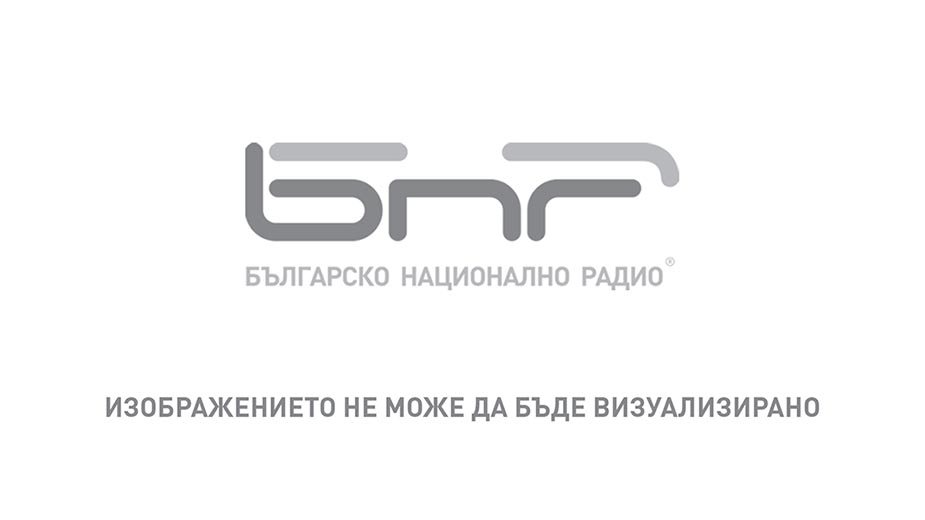
The fact that Bulgaria has a diverse cultural heritage attracts numerous connoisseurs from all over the world, but also treasure-hunters, sharks and people trafficking in cultural values. The Interior Ministry, the State Agency for National Security and the Prosecutor’s Office pooled their efforts and rescued two unique Bulgarian artifacts which were brought back home before they were sold illegally abroad – a 3rd century gold Roman necklace and a manuscript - a hand-written collection of religious treatises, a copy made by Todor of Pirdop, a man of letters from the time of the Bulgarian National Revival. The two were put on display for the first time at the Ministry of Culture.
“These two artifacts in fact provide the pieces that fill in the blanks in Bulgaria’s cultural heritage,” said Minister of Culture Petar Stoyanovich at their presentation.
The cultural, historical, scientific and monetary value of these two unique artifacts is immeasurable. The ancient necklace is very rare, one of the best examples of goldsmithery from the Roman Empire’s eastern provinces. It is made of pure gold and weighs 38.55 grams. The necklace is a chain with intertwined segments at both ends and an S-shaped hook. The centrepiece is made up of two kinds of alternating and joined beads: some are hollow, semi-cylindrical with horizontal relief; the others are square with pyramids built into them and made so as to reflect and refract the sunlight. The whole necklace seems to glow from the inside. As to the manuscript, it bears the signature of one of the last Bulgarian men of letters to have hand-copied books – Todor who worked mostly in Pirdop in the first half of the 19th century. It includes 20 sermons about different saints and major church holidays and 26 colour miniatures.
Here is Prof. Bozhidar Dimitrov, Director of the National Museum of History with more about what makes these two artifacts unique:
“The fact that they are well preserved. We must not forget that manuscripts sometimes come down to us tattered or infested with mildew. This one is relatively well preserved. The fact that it has miniatures is also a rarity. While the necklace is a veritable masterpiece. Necklaces like it have been found before but never one exactly like this. It is whole, we rarely find jewelry like it that has not been broken.”
In the words of Prof. Dimitrov the necklace probably belonged to a wealthy lady, an aristocrat as in the 3rd century there were major Roman towns in the area such as Nikopolis ad Istrum, close to the town of Gotse Delchev or Skaptopara – today’s Blagoevgrad.
 “We have checked with world jewelry experts and there is no other necklace like this one",Prof. Dimitrov explains. "That is why we chose to put it on display. Otherwise there are over 60,000 artifacts that have been intercepted during trafficking. The necklace was probably made locally, because Thrace and Macedonia are the two “boomtowns” of the Roman Empire. There were many wealthy men, most of them former Thracian aristocrats. They had the money to commission such pieces of jewelry; there was a market for them right here, so there was production as well.”
“We have checked with world jewelry experts and there is no other necklace like this one",Prof. Dimitrov explains. "That is why we chose to put it on display. Otherwise there are over 60,000 artifacts that have been intercepted during trafficking. The necklace was probably made locally, because Thrace and Macedonia are the two “boomtowns” of the Roman Empire. There were many wealthy men, most of them former Thracian aristocrats. They had the money to commission such pieces of jewelry; there was a market for them right here, so there was production as well.”
The pilfered Bulgarian manuscript, rescued before it was auctioned off by Sotheby’s comprises 128 pages, but the first 24 are missing. They were probably torn off on purpose so as to conceal its location. This makes it difficult to determine the exact time and place where it was written. However, it is beyond any doubt that in 1870 it was being read by the people in the village of Makotsevo, Sofia district, says Prof. Boryana Hristova, Director of the St. St. Cyril and Methodius National Library. In her words, there is one fact that helps date the manuscript, and it is that in later years Todor abruptly broke off with canonic tradition.
“Seven manuscripts by Todor of Pirdop are kept at the National Library,” Prof. Hristova says. “They are all full of astrology signs and their description and prophecies reaching up to the year 2000. This one is an early manuscript, written by him when he was still bound by the canon. I myself date it to 1825-1828, that is precisely the kind of sermons he was writing then. But Todor is also very adept as an artist. He painted some of the best prophecy games in written Bulgarian tradition. The fact that this manuscript was found and brought back home is an important element of our written 19th century culture.”
English version: Milena Daynova
Italy investigates claims of hunting of people in Sarajevo in the 1990s The prosecutor's office in Milan has launched an investigation into shocking reports of organized "sniper safaris" in Bosnia during the war in..
Albania and Bulgaria have joined forces in the name of one more child being born. In the late afternoon of November 7, the first-ever free reproductive medicine checkups, led by Bulgarian specialists, began in the Albanian town of Korçë — a region..
A Bulgarian-designed electric vessel has gained international recognition , reaching the final round of the prestigious Gussies Electric Boat Awards 2025 . The awards celebrate the world’s most innovative and sustainable electric boats and yachts,..
From fear and doubts to joy and support – Bulgarians react differently to the upcoming introduction of the euro on January 1, 2026. For..
Kosovo is heading for early elections after nine months of failed attempts to form a government Kosovo President Vjosa Osmani has dissolved..
The Day of the Christian Family is an annual event that brings Bulgarians in Hamburg together. 2025 is no exception, with invitations having been..

+359 2 9336 661
